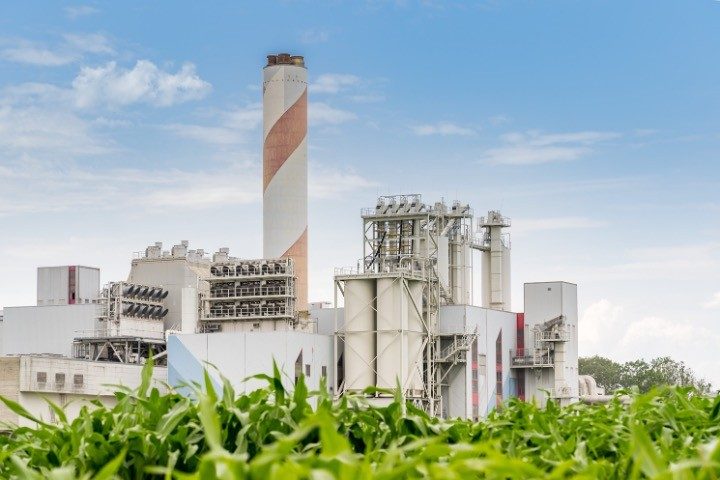
Congress is subsidizing billions of dollars in carbon dioxide (CO2) harvesting across the United States, in keeping with the Biden administration’s net-zero fantasies. Some of the projects aim to trap CO2 as it is produced by refineries and power plants, a process known as carbon capture and storage (CCS). Its close cousin is carbon dioxide removal (CDR), which involves large machines that extract CO2 directly from the atmosphere. Both methods aim to store the captured gas underground or in ocean reservoirs.
Last November the Department of Energy (DoE) announced its “Earthshots” initiative to promote CDR technology. Energy Secretary Jennifer Granholm called it a crucial move to “meet the urgent needs of the climate crisis.” DoE hopes to reduce the cost of the process, and it plans to expand CDR deployment “at the gigaton scale” to keep up with what forecasting models predict is necessary to achieve “carbon neutrality” by 2050.
Within days of the Earthshots announcement, President Biden signed the $1.2 trillion infrastructure bill, passed by Congress — with the invaluable help of 13 Republicans — in support of his “Build Back Better” agenda. Among the legislation’s disastrous provisions is $3.5 billion allotted to development of CCS technology and another $3.5 billion for CDR. On top of that, $2.5 billion goes specifically to carbon storage projects, $2.1 billion to fund low-interest loans to CO2 pipeline expansion, and hundreds of millions more to support associated federal and state tax-dollar-squandering provisions, according to JD Supra.
Grist reports that there are around 5,000 miles of CO2 pipeline in the country, regulated since 1991 by the federal Department of Transportation’s Pipeline and Hazardous Materials Safety Administration (PHMSA). Experts estimate between 30,000 and 65,000 miles of pipeline will be needed to achieve government goals.
The measures have garnered a strange-bedfellow mix of opponents. AgWeek reports that land-owners “fear the inevitable use of eminent domain and the loss of private property rights” in areas where CO2 pipeline expansion is planned. Public comments on permits in Iowa and South Dakota are “overwhelmingly against the pipeline.”
Environmentalists are up in arms, too. The Sierra Club calls carbon-capture projects “greenwashing schemes” actually intended to promote “Enhanced Oil Recovery” (EOR). EOR pumps the trapped CO2 into depleted oil wells to extract more petroleum, a move that activists complain helps perpetuate “dependence on fossil fuels.”
Residents of Satartia, Mississippi, may have the most compelling objections; they learned in February 2020 that CCS comes with life-threatening safety issues. A pipeline operated by Denbury Resources in the hills just outside town ruptured, sending a dense cloud of CO2 descending on the village. Within minutes individuals began collapsing in their homes. Others tried to escape, but their vehicles “just shut off, since they need oxygen to burn fuel,” reported HuffPost.
“While ambient CO2 is odorless, colorless and heavier than air, the industrial CO2 in Denbury’s pipeline has been compressed into a liquid, which is pumped through pipelines under high pressure,” the article explained. “A rupture in this kind of pipeline sends CO2 gushing out in a dense, powdery white cloud that sinks to the ground and is cold enough to make steel so brittle it can be smashed with a sledgehammer.”
The incident sent 49 of the area’s 300 residents to the hospital, while most of those remaining had to evacuate. No one died, but an emergency authority said many would not have survived if the disaster had occurred at night while people were sleeping. Residents now live with residual lung, stomach, and neurological problems they never experienced before. Adding to the stress are worries that it could happen again. In fact, another accident spewed even more CO2 the following October during repairs to the damaged section, causing repeat evacuations. Even now, “PHMSA has yet to release an incident report detailing the cause of the rupture,” reports Grist.
Mississippi also holds a lesson in the economic costs of CCS. In an op-ed for The Hill, Manhattan Institute senior fellow Robert Bryce cited the Kemper County power plant owned by Southern Company, “a project that aimed to prove feasibility of CCS.” DoE subsidized Kemper in 2010 with $270 million, but when construction time nearly doubled and expenses more than tripled over original expectations, “Southern canceled the project, sticking ratepayers with about $1.1 billion of those costs.”
Of completed CCS projects, Bryce explained that all are expensive. “[T]hey require huge amounts of energy to separate and capture” CO2, and removing “it from flue gas cuts a power plant’s output by as much as 28 percent.” Moreover, “disposing of just 10 percent of global carbon dioxide emissions with CCS would require building an industry as large and sophisticated as the global oil sector — in reverse,” he noted.
Authorities say the price of CCS pales in comparison to CDR. “Climate Experts Say Vacuuming CO2 From the Sky Is a Costly Boondoggle,” reads a recent TIME magazine headline. “The U.S. Government Just Funded It Anyway.” The article describes plans for direct-air capture hubs yet to be built. Each would be “able to pull a million tons of CO2 out of the air” annually, though “to make a dent in climate change, the world would have to be sequestering thousands of times more carbon dioxide than those projects will.”
Of course, climate experts who have earned the appellation “deniers” point out that Earth’s climate is impervious to human CO2 emissions, and that historical records reveal that fluctuations in atmospheric CO2 follow, rather than lead, those in global temperature. Additionally, far from being a pollutant, carbon dioxide is a “nutrient to life on earth,” according to the Center for the Study of Carbon Dioxide and Global Change.
Instead of chasing CO2 pipeline dreams, Tim Benson, policy analyst for The Heartland Institute, recommends ending subsidies and tax credits to carbon-capture technologies and removing “detrimental regulations” on reliable energy sources. He points out that “CO2 emissions in the United States have been relatively flat since 1990” while natural gas consumption has exploded.
Unfortunately, reality is characteristically non-existent among factors considered by the Biden administration and Congress when planning how to spend your tax money.




